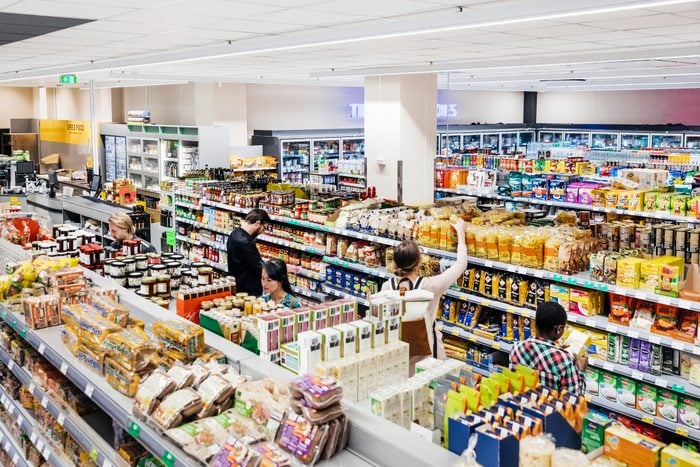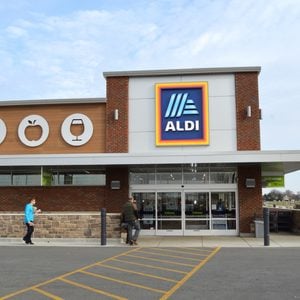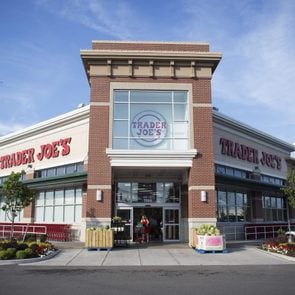This Is Why Most Grocery Stores Don’t Have Windows
Updated: May 23, 2022

Grocery stores have a few tricks up their sleeve.
When you’re grocery shopping, have you ever noticed that supermarkets often don’t have windows and if they do they’re only at the front of the store? You might not pay much attention to the architectural features of the building you’re grocery shopping in—you’re there to shop for food, not admire the layout! But that’s just it—if grocery stores had windows, would it be easier to get sidetracked from your main shopping task? There are all sorts of supermarket tricks grocery stores have to keep you shopping longer. Let’s find out how the lack of windows comes into play. Plus, check out these other explanations of little things you probably never thought about till now.
Why do you rarely see windows in grocery stores?
It’s no accident that grocery stores often lack windows—and there are a few reasons behind this trend. One of them is, sure enough, an attempt to keep people inside longer. “[Stores] want to create a separate environment within their store, where the outside world doesn’t exist,” explains Andrei Vasilescu, a shopping expert who’s studied shopping behaviors and psychology. “You don’t get distracted by the rain, or sunshine, or the fact that your kids are waiting in the parking lot. All your focus is on the shopping experience.” This technique also prevents shoppers from, say, noticing that it’s getting dark out. It really contributes to an “immersive” shopping experience, for better or worse. Do you know the grocery store with the best reputation in America?
Keeping daylight out of grocery stores can also help preserve the products, as some products can spoil faster in direct sunlight. Too much sun exposure can even cause packaging labels to fade. Furthermore, having windows in their stores would decrease the space available to showcase products. “Exterior walls have strong structural supports and can hold the heavier items on the shelves of those walls,” says Margine Biswas, an architect with ARCHIPHY with expertise in retail design. Not to mention, “windows and storefronts are expensive and retailers want to minimize the cost of construction.” And finally, she adds that windows could present security concerns as “retailers want to minimize as many possible entry points to their space as possible.”
Find out why stores ask for your phone number at checkout before you give it out next time.
Are some grocery stores bucking this trend?
In Germany, some Aldi stores have tested out stores with more natural light, whether that’s from windows or a dome in the ceiling. The success was mixed; one store had some gingerbread products melt rapidly due to the sunlight. They needed to replace the glass with specially designed panes that help reduce the potency of heat and UV radiation. This technique hasn’t exactly caught on widely yet—but maybe it should. A National Renewable Energy Laboratory study in 2002 assessed the effects of natural light on shoppers—and it found that shoppers felt vastly more comfortable when there was more natural light around. They were also better able to identify both products and other people in the store. It’s worth noting, though, that this study assessed natural light in all retail spaces, not just grocery stores. The challenges of adding more natural light to grocery stores remain. Next, find out these other grocery store secrets you didn’t know about.
Sources:
- Andrei Vasilescu, shopping expert with dontpayfull.com
- Margine Biswas, architect with ARCHIPHY
- Mental Floss: “The Reason You Rarely See Windows in Grocery Stores”
- Business Insider: “Why supermarkets have so few windows”
- National Renewable Energy Laboratory: “A Literature Review of the Effects of Natural Light on Building Occupants”



